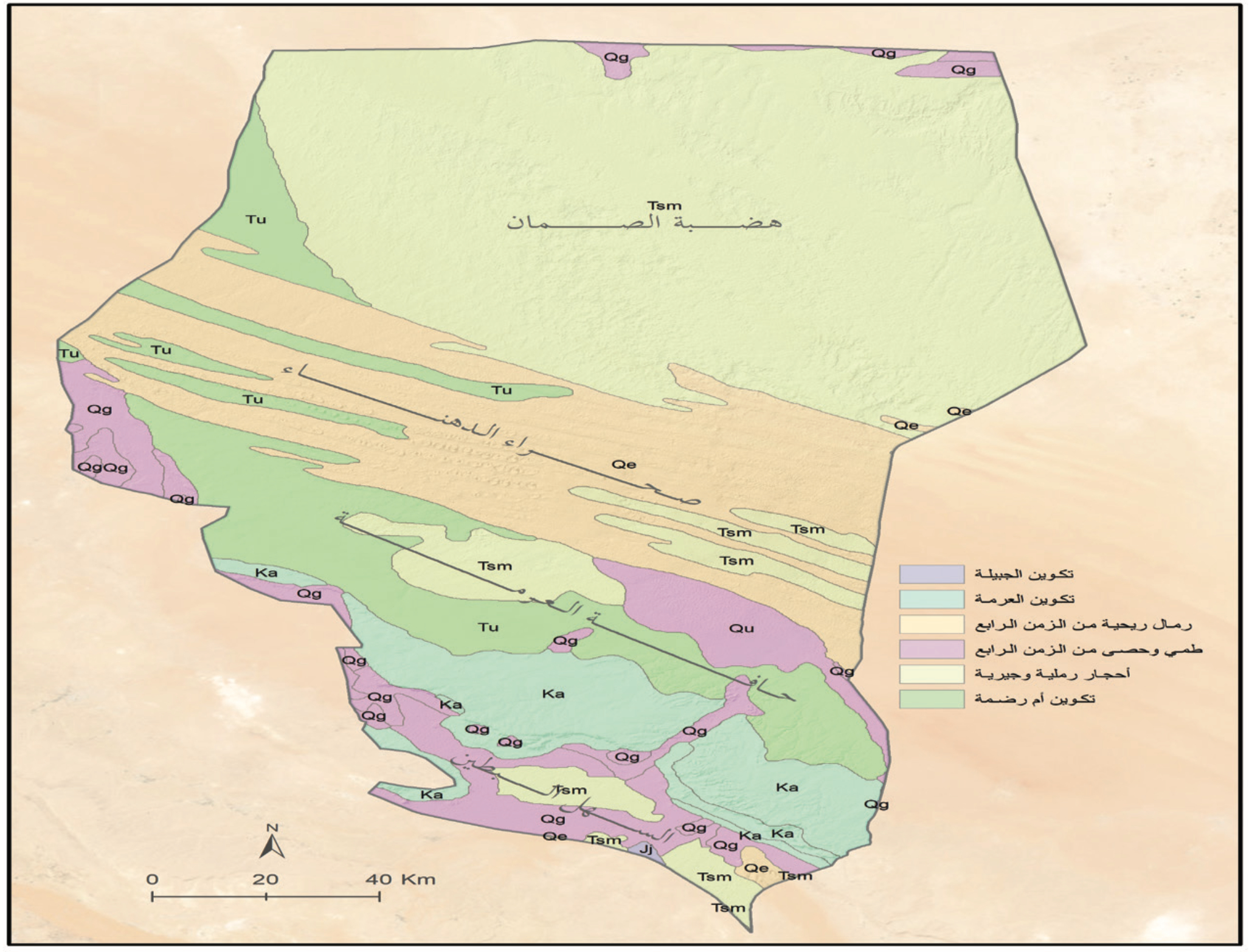Arabic
Issued by King Abdulaziz Royal Reserve Development Authority Decision 000829-25-001
Article 1
For the purposes of applying these controls, the following words and phrases—wherever they occur—have the meanings assigned to each of them, unless the context requires otherwise:
Controls:
The Controls for Visiting the Saman and Dahna Zones.
Reserve:
The King Abdulaziz Royal Reserve.
Authority:
The King Abdulaziz Royal Reserve Development Authority.
Chief executive officer:
The chief executive officer of the authority.
Saman zone:
Part of the Saman area inside the scope of the reserve pursuant to Royal Order 42753 dated 28 Rajab 1442 [28 January 2021], with an area of 12,436 km2 in accordance with the map attached to the controls.
Dahna zone:
Part of Dahna area inside the scope of the reserve, with an area of 7,470 km2 in accordance with the map attached to the controls.
Permit:
A document granted by the authority to a person before visiting or traveling inside Saman zone or Dahna zone.
Permittee:
Any person who engages in activities with another person for the purpose of leisure, tourism, recreation, or otherwise inside the Saman zone or Dahna zone.
Zone:
Saman zone or Dahna zone—in accordance with the permit—issued by the authority to the permittee.
Article 2
These controls aim to regulate visiting and traveling within the geographical scope of the reserve in a manner that contributes to the preservation of the natural and plant environment and wildlife based on the Organizational Arrangements of the Royal Reserves Council and the Royal Reserves Development Authorities issued by Council of Ministers Decision 437 dated 1 Rajab 1441 [25 February 2020] and the Environment Law issued by Royal Decree D/165 dated 19 Dhu Al-Qa’dah 1441 [26 June 2020].
Article 3
The scope of application of these controls is exclusive to the zone, and the authority may specify other zones for which they apply.
Article 4
It is permitted to visit and travel inside the zone from six o’clock in the morning until six o’clock in the evening, provided that entry to the zone is registered on the website of the authority. It is prohibited to visit or travel during or outside these times without obtaining a permit from the authority, except for inhabitants of the administrative centers located inside the zone registered with the authority, provided that the following conditions are complied with:
1․ Refraining from intentionally harming the nature of the zone, the wildlife and its associated animals or plants, or its aesthetic value.
2․ Maintaining the general cleanliness of the zone, and refraining from leaving waste of any kind, burying it, burning it, throwing it in places other than those designated for it, or taking it outside the zone.
3․ Following the safety and security procedures when traveling, and refraining from trampling vegetation or exposing the zone to pollution.
4․ Vehicle transportation inside the zone must be restricted to following previously established routes.
5․ Refraining from carrying out any works related to logging, firewood collection and transportation, hunting, or damaging any of the resources of the zone.
6․ Complying with not feeding animals or making noise that disturbs visitors or wildlife.
7․ Avoiding the use of vehicle horns inside the area except when necessary and to the minimum extent.
8․ Complying with the provisions of these controls and laws, decisions, and instructions issued in this regard related to it.
Article 5
The authority shall grant a permit for visiting or traveling inside the zone outside the specified time stipulated in article 4 of these controls on the website of the authority, with the approval of the chief executive officer—or his representative—in accordance with the following mechanism:
1․ Submitting the permit application two working days prior to the date of visiting or traveling inside the zone, provided that the permit applicant attaches the following requirements:
(a) A copy of a valid national identity/residency card.
(b) Date and time of the requested period.
(c) Mobile number, email, and national address.
(d) Vehicle details, as well as attaching a copy of the driver’s license.
(e) Coordinates of the location to be visited.
2․ The authority shall review the application and respond with approval/rejection within two working days from the date of receipt of the application and shall notify the permit applicant.
Article 6
Any of the following practices are considered a violation of the provisions of these controls:
1․ Providing incorrect information.
2․ Driving over vegetation by vehicles or creating new routes.
3․ Lighting fire in places other than those designated for it, such as a brazier (manqal) and the like.
4․ Camping of all kinds (canopies fixed to the ground, tents, caravans, and privacy screens (ruwaq)).
5․ Any form of harm to wildlife.
6․ Cutting, moving, or tampering with trees and plants.
7․ Refraining from collecting natural resources, such as flowers, rocks, and others.
8․ Refraining from entering with vehicles into meadows.
9․ Refraining from entering with motorcycles.
10․ Refraining from using local firewood and charcoal.
11․ Refraining from entering during unauthorized times, or entering without registering on the website of the authority during the authorized times.
12․ Any other practices that violate the relevant laws, regulations, and instructions.
Article 7
1․ The visitor shall leave the zone at the end of the authorized visiting period.
2․ The authority may seek recourse against the visitor to pay compensation in the event of damage, pollution, or environmental deterioration.
Article 8
The environmental inspector shall police violations in coordination with the Ministry of Interior and the relevant entities in accordance with the legal procedures for that.
Article 9
The authority shall review and update these controls periodically—when needed—with the approval of the chief executive officer and the notification of the board of directors of the authority.
Article 10
These controls apply and come into force from the date of their publication in the official gazette.
Map

Published in Umm Al-Qura 5095 issued on 4 July 2025.


